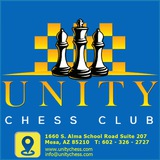25.exd4 Bc6! 26.Qc4 Bxf3 27.gxf3 cxd4 28.Na4 Qb5 29.Qe2 Rc7! 30.b3 Qxb3 31.Qxa6 Qxf3 also offers no hope of survival.
Black had many ways to win, but this prophylactic move, defending against a possible fork on f5, is the most technical.
30.Ndf3 Qxg3 31.Rxd8+ Bxd8 32.Qb4 Be4 33.Bxe4 Nxe4 34.Rd4 Nf2+ 35.Kg1 Nd3 36.Qb7 Rb8 37.Qd7 Bc7 38.Kh1 Rxb2 39.Rxd3 cxd3 40.Qxd3 Qd6 41.Qe4 Qd1+ 42.Ng1 Qd6 43.Nhf3 Rb5 0-1
Unity Chess Club
Lajos Portisch 2630 Tigran Petrosian 2620 Lone Pine 1978 Black to move
Hanging pawns are good when they are supported by their own pieces, but in this position, the Ra1 is ‘sleeping’, and the Nd2 is under an X-ray attack along the d-file.
Hit by a sudden blow, White does not find the inner strength to put up serious resistance, and he loses easily. More tenacious was 24.d5, although here too, after 24...Rh6 25.Nf3 (on 25.e5, there follows the simple 25...Bf8, and the pawn on d5 is undefended) 25...Nd3 26.Re2 Nxb2 27.Rxb2 Bc5+ 28.Kh1 f5, Black breaks up the white centre and wins a pawn.
24...Nxe4 25.Rac1 Bf8 26.Ne5 Nd6 27.a4 f6 28.Nf3 Rxe1+ 29.Nxe1 Rd7 30.Nf3 Nf5 31.Kf2 h5 32.Rc2 g5 33.Rc4 Bd6 34.g3 Kf7 35.Ng1 Ne7 36.Ne2 Nd5 37.Bc1 Ke6 38.Rc2 Kf5 39.Kf3 g4+ 40.Kf2 Rh7 41.Rd2 h4 42.Kg2 Ke4 43.Rd1 Ne3+ 44.Bxe3 Kxe3 45.Nc3 h3+ 0-1
Unity Chess Club
Robert Fischer Boris Spassky Reykjavik Wch match1972 (6) White to move
The black pieces are insufficiently active to support the hanging pawns, and White uses a tactical nuance to attack them:
On 18...Nf6, there would follow 19.Nb3 Nd7 (19...c4 20.Qxe7 Rxe7 21.Nd4 gives White an excellent post for his knight) 20.Rc3, followed by Rf1-c1 – defending c5 is not easy.
Black is prepared to defend the c5-pawn, but White finds a new target in his camp, and switches to an attack on the light squares.
Black is prepared to defend the c5-pawn, but White finds a new target in his camp, and switches to an attack on the light squares.
20...dxe4 would leave too many pawn islands in the black camp.
On 20...c4, there would follow 21.Qh3, with the idea of a blow against the light squares with b2-b3.
It was essential to maintain the tension on the central light squares. Correct was 20...Nf6, after which White only has a minimal advantage.
On 20...c4, there would follow 21.Qh3, with the idea of a blow against the light squares with b2-b3.
It was essential to maintain the tension on the central light squares. Correct was 20...Nf6, after which White only has a minimal advantage.
